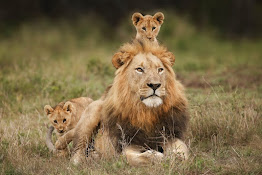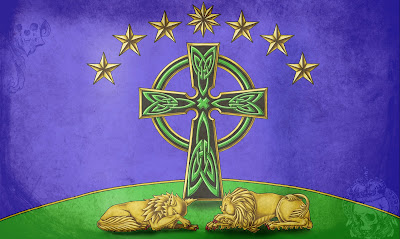In the days of my youth, it occurred to me that my time on this sphere was finite, that I like all people had very limited time, and soon enough my bones would lay from east to west like everyone else’s. After the initial fear of this revelation, a particular angst took over about what I would leave behind.
With this urgency fortifying my actions I set out into the world with a need for adventure and a collection of accomplishments that would be hard to surpass; circumnavigation of the globe, military service during war, publishing a book, art shows of my work, and all before my 23rd year. Then followed more gallery openings, the founding of various artistic societies, climbing through the rites of various Orders, and the attainment of a Master’s of Science.
While these acts are laudable, and I would not be near the man that I am today without them, they can also be trivial in the grand scheme of things. What makes them trivial is that they are more often than not self-serving, do little to help our fellow beings, and cannot be passed down, thus, all too soon forgotten after one ascends to other realms.
 Then like so many before, my sons were born, the search for meaning and a need to define who I was simply became irrelevant, lying there before me was the culmination of my heritage. Not just my heritage; but the masculine values and behaviors that have been passed down from father to son, generation after generation, for thousands of years. In addition to my R1b DNA, and everything that I am. The blood that flows through his veins is the same red blood as my ancestors, and the same ruddy color as the soil of our homeland in the gently rolling hills of Oklahoma. He is me and so much more.
Then like so many before, my sons were born, the search for meaning and a need to define who I was simply became irrelevant, lying there before me was the culmination of my heritage. Not just my heritage; but the masculine values and behaviors that have been passed down from father to son, generation after generation, for thousands of years. In addition to my R1b DNA, and everything that I am. The blood that flows through his veins is the same red blood as my ancestors, and the same ruddy color as the soil of our homeland in the gently rolling hills of Oklahoma. He is me and so much more.
Now when I climb in social spheres it is to give my children a proverbial leg up in the future, when I pursue accolades it is not for self-recognition, but to provide a better way of life for my children. My daily actions teach them how to be proper men; having a good work ethic, simply paying the bills on time, expressing love for those that I do, and respecting my elders teaches them by example of what a man does and does not do. To help others, even when they do not deserve it, simply put, to be chivalrous.
This new realization of what life is, and this new pursuit of its meaning, is illustrated by the virtues of Heraldry. Simply put, heraldry is a system of signs, symbols, and markings through Coats of Arms, Crest Badges, and the like that can be passed down from one generation to the next. One may lose his entire fortune and will still retain his Arms. Heraldry is not simply some pretentious painting on a shield in a cultural system that has lost it relevancy. It is a symbol of who we are, of whom our ancestors were, and who our sons and daughters will be. They are an abstraction of our very genome and culture.
In a system where one serves God first, then devotion to family, followed by service to one's country, and lastly oneself. Heraldry can reiterate and reinforce the magnitude of what it is to be a member of a people, community and culture, to be a family.
Arms blazoned to wit: Azure, a Celtic cross Vert and Sable, fimbriated Or, erected on a mount Vert be-tween a humbled lion and a coyote both Or, in chief above the cross seven five-pointed stars in demi-circle, the central one ten-pointed, all Or. Above the shield is placed a helmet with a mantling Vert, doubled Or, and On a wreath Or and Vert is set for crest, a chalice Or.
There are several aspects of heraldry; I will cover mine in detail here to serve as an example. Though it is by no means the ideal, it can serve as a foundation for ideas with your
own. My coat of arms is rich with symbolism, yet not simple enough to conform to the ideals of traditional heraldry, with that said here is a description.
own. My coat of arms is rich with symbolism, yet not simple enough to conform to the ideals of traditional heraldry, with that said here is a description.
 |
| Dad and cubs |
 |
| Coyote teaches pups to howl |
The king of the jungle or Old World and the prince of the New Jerusalem are both humbling themselves and averting their eyes from the glory that is Christ. The cross is Celtic to pay homage to our Anglican denominational roots, and to our ancestors
 |
| (link to source) |
The seven stars above represent the seven eyes of God as in Revelation 5:6 - "And I beheld, and, lo, in the midst of the throne and of the four beasts, and in the midst of the elders, stood a Lamb as it had been slain, having seven horns and seven eyes, which are the seven Spirits of God sent forth into all the earth". And can also be found in Zechariah 3:9, Zechariah 4:10, Revelation 1:4, Revelation 3:1, and Revelation 4:5.
The color green is traditionally symbolic of nature, environment, health, good luck, renewal, youth, spring, generosity, fertility, wild, and vigor. The color blue is traditionally symbolic of peace, tranquility, calm, stability, harmony, unity, trust, truth, confidence, conservatism, security, cleanliness, order, loyalty, sky, and water. Lastly the color Yellow or gold traditionally represents Joy, happiness, optimism, idealism, imagination, hope, sunshine, summer, philosophy, and friendship.
The gold is also emblematical of the gold that the alchemists seek, the prima materia or sorcerer’s stone, it represents the quest for immortality of the body and of the soul, which also alludes to the chalice serving as the crest upon he Norman helm which represents the Holy Grail and the search for immortality in Christian legends, even more esoterically it refers to the san graal or royal/noble blood flowing through our veins.
The Latin phrase “Protege Mites! Puni Impios”! Translates to “defend the meek, deliver the wicked”.
My arms are a culmination of my heritage and family identity.
Banner
The banner is square or oblong and larger than the pennon. It bears the entire coat of arms of the owner, composed precisely as upon a shield.
 "In the olden time, when a Knight had distinguished himself by conspicuous gallantry, it was the custom to mark his meritorious conduct by prompt advancement on the very field of battle. In such a case, the point or points of the good Knight’s Pennon were rent off, and thus the ... small Flag was reduced to the square form of the Banner, by which thenceforth he was to be distinguished"
"In the olden time, when a Knight had distinguished himself by conspicuous gallantry, it was the custom to mark his meritorious conduct by prompt advancement on the very field of battle. In such a case, the point or points of the good Knight’s Pennon were rent off, and thus the ... small Flag was reduced to the square form of the Banner, by which thenceforth he was to be distinguished"
Charles Boutell, The Handbook to English Heraldry
The banners of members of Orders of Chivalry are typically displayed in the Order's chapel. Banners of Knights of the Order of the Thistle are hung in the 1911 chapel of the Order in St Giles High Kirk in Edinburgh.[4] Banners of Knights of the Order of the Garter are displayed in St George's Chapel at Windsor Castle.
Sigil
Historically, the majority of seals were circular in design, although ovals, triangles, shield-shapes and other patterns are also known. The design generally comprised a graphic emblem (sometimes, but not always, incorporating heraldic devices), surrounded by a text (the legend) running around the perimeter. The legend most often consisted merely of the words "The seal of [the name of the owner]", either in Latin or in the local vernacularlanguage: the Latin word Sigillum was frequently abbreviated to a simple S:. Occasionally, the legend took the form of a motto.
In the Middle Ages it became customary for the seals of women and of ecclesiastics to be given a vesica(pointed oval) shape. The central emblem was often a standing figure of the owner, or (in the case of ecclesiastical seals) of a saint.
Sealing wax was naturally yellowish or pale brownish in tone, but could also be artificially colored red or green (with many intermediary variations). In some medieval royal chanceries, different colors of wax were customarily used for different functions or departments of state.[
The matrices for pendent seals were sometimes accompanied by a smaller counter-seal, which would be used to impress a small emblem on the reverse of the impression. In some cases the seal and counter-seal would be kept by two different individuals, in order to provide an element of double-checking to the process of authentication. Sometimes, a large official seal, which might be in the custody of chancery officials, would need to be counter-sealed by the individual in whose name it had been applied (the monarch, or the mayor of a town): such a counter-seal might take the form of a signet-ring, and so would be necessarily smaller. Other pendent seals were double-sided, with elaborate and equally-sized obverses and reverses. The impression would be formed by pressing a "sandwich" of matrices and wax firmly together by means of rollers or, later, a lever-press or a screw press. Certain medieval seals were more complex still, involving two levels of impression on each side of the wax which would be used to create a scene of three-dimensional depth.
Seal matrices would frequently be handed down from father to son, and so the son would effectively inherit the symbols used by his father. It is generally agreed that this custom was a significant factor in the emergence of hereditary heraldry in western Europe in the 12th century.
Monograms first appeared on coins, as early as 350BC. The
earliest known examples are of the names of Greek cities who issued the coins,
often the first two letters of the city's name. For example, the monogram of Achaea consisted of the letters alpha (Α) and chi
(Χ) joined together.
Monograms have been used as signatures by artists and craftsmen
on paintings, sculptures and pieces of furniture, especially when guilds enforced
measures against unauthorized participation in the trade. A famous example of a
monogram serving as an artist's signature is the "AD" used by Albrecht
Dürer.











No comments:
Post a Comment